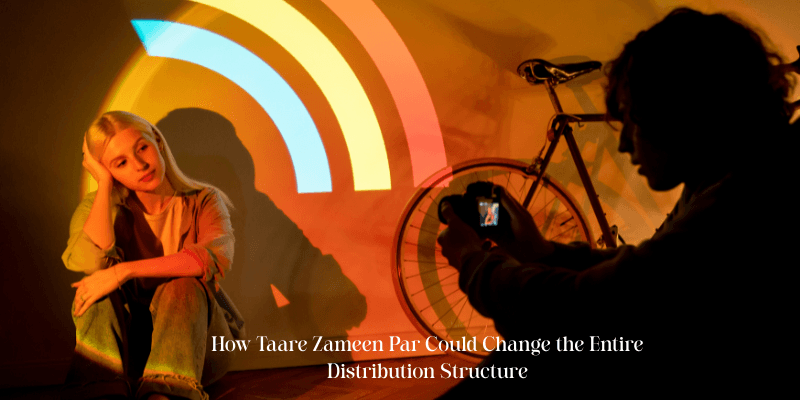
How Taare Zameen Par Could Change the Entire Distribution Structure
When Taare Zameen Par released in 2007, it wasn’t just another Bollywood film, it was a revolution. Aamir Khan’s directorial debut told the heartfelt story of a dyslexic child, challenging how films with social themes could find mainstream success. More importantly, it demonstrated that movies rooted in sensitivity and education could thrive commercially. If re-released today across open platforms and digital distribution models, Taare Zameen Par could once again disrupt the film distribution structure, offering lessons for both young filmmakers and established studios.
The Old Distribution Model: Controlled and Limited
For decades, Bollywood films followed a predictable release path:
- Theatrical distribution (single screens, multiplexes).
- Satellite rights for TV.
- DVD sales.
This structure often favored big-budget films with star power. Smaller, content-driven films struggled to secure screens, making it difficult for stories like Taare Zameen Par to reach wide audiences.
The New Era of Film Distribution
With the rise of YouTube, OTT platforms, and digital-first releases, the power balance has shifted. Now, content, not just celebrity, decides success. A film like Taare Zameen Par, with its universal theme of education and empathy, could leverage:
- YouTube Premieres for initial reach.
- OTT Platforms like Netflix or Amazon Prime for global distribution.
- Social Media Campaigns to drive conversations around inclusivity.
Pro Tip: Filmmakers today should build campaigns around impact storytelling. Socially relevant films perform well when accompanied by educational drives, NGO collaborations, or community screenings.
Real-Life Examples of Digital Disruption
- The Lunchbox (2013): A modest indie film that found international acclaim through film festivals and streaming deals.
- Bulbbul (2020): Released directly on Netflix, bypassing cinemas during lockdown, and became a cultural conversation starter.
- Kantara (2022): A regional film that leveraged word-of-mouth and later streaming to achieve pan-India recognition.
These examples highlight how films that may have struggled under traditional models flourished under new distribution structures.
Why Taare Zameen Par Is Still Relevant
The film’s emotional depth and universal message around learning differences resonate globally. If reimagined for today’s digital distribution structure, it could:
- Spark educational movements on platforms like YouTube.
- Drive awareness campaigns for NGOs through partnerships.
- Reach international audiences instantly via OTT.
- Monetize through merchandise, workshops, and educational apps tied to the film.
Challenges in the Digital Age
While opportunities are vast, challenges exist:
- Platform Saturation: Thousands of films release digitally every year. Standing out requires smart marketing.
- Revenue Splits: OTT platforms often control monetization terms.
- Piracy: Even digital releases are vulnerable.
Pro Tip: Build a strong digital brand for your film. Use storytelling across Instagram, podcasts, and newsletters to create an audience before release.
How Taare Zameen Par Could Influence Distribution Strategy
If a film like Taare Zameen Par were launched today, it could push the industry towards:
- Hybrid Releases: Limited theatre runs + global digital premiere.
- Impact Partnerships: Collaborations with schools, mental health orgs, and ed-tech companies.
- Data-Driven Decisions: Using analytics from OTT and YouTube to plan marketing spend and expansion.
- Community-Led Distribution: Crowdfunding screenings in smaller towns and educational hubs.
This model empowers filmmakers to control their narrative and distribution, rather than relying solely on traditional studios.
The Future of Film Distribution
The success of socially driven films will no longer depend on the number of screens booked but on audience engagement across digital touchpoints. As Gen-Z and Millennials prefer on-demand viewing, the distribution structure is evolving into a creator-first, audience-centric model.
Pro Tip: Filmmakers should explore multi-platform storytelling teasers on Instagram, BTS on YouTube, and full releases on OTT. This keeps audiences engaged at every step.
Conclusion
Taare Zameen Par was ahead of its time both in subject and spirit. If re-launched today, it could reshape how films are distributed by leveraging digital platforms, OTT reach, and community engagement. The lesson is clear: films with heart can thrive beyond traditional models when paired with smart, inclusive distribution strategies.
FAQs
-
How did Taare Zameen Par originally reach audiences?
Through theatrical releases, satellite TV rights, and DVD sales under the traditional model.
-
How could Taare Zameen Par benefit from digital distribution today?
By leveraging YouTube premieres, OTT platforms, and social media campaigns for global reach.
-
What are some real-life examples of films succeeding through new distribution methods?
Films like The Lunchbox, Bulbbul, and Kantara gained success via streaming and word-of-mouth.
-
What challenges do filmmakers face with digital distribution?
Key challenges include platform saturation, piracy risks, and OTT revenue splits.
-
How can socially relevant films like Taare Zameen Par maximize impact in modern times?
By using hybrid releases, NGO partnerships, data-driven strategies, and community-led screenings.
